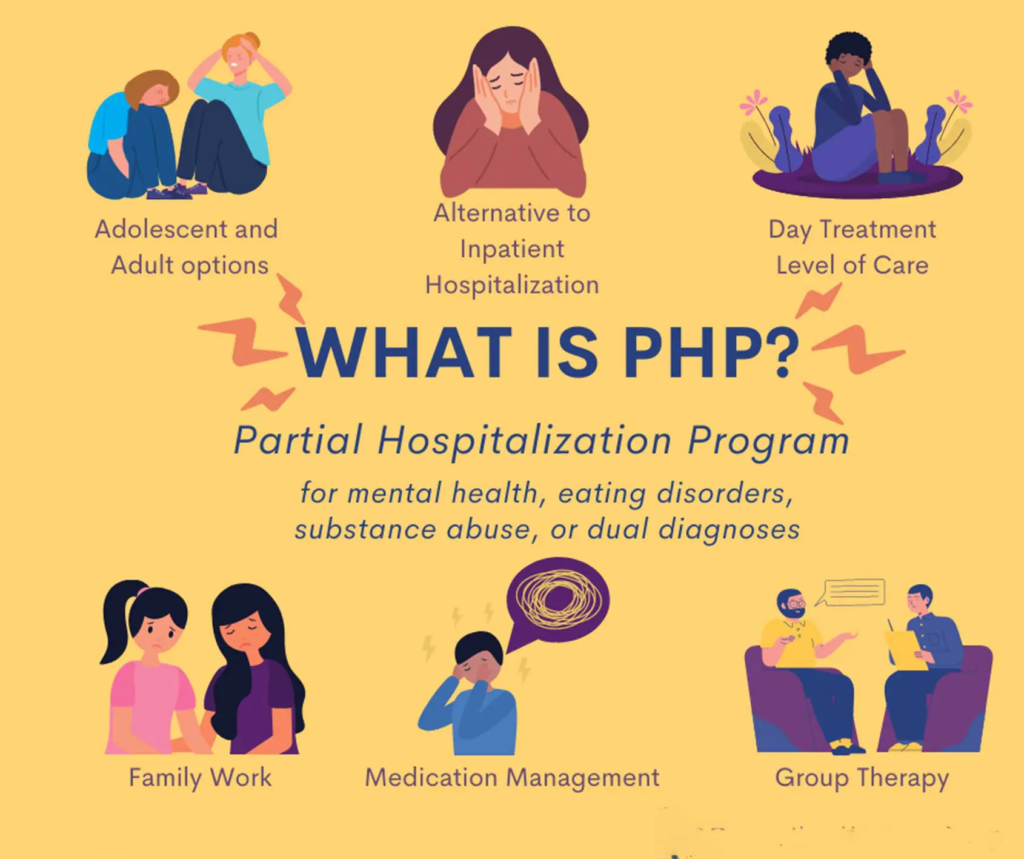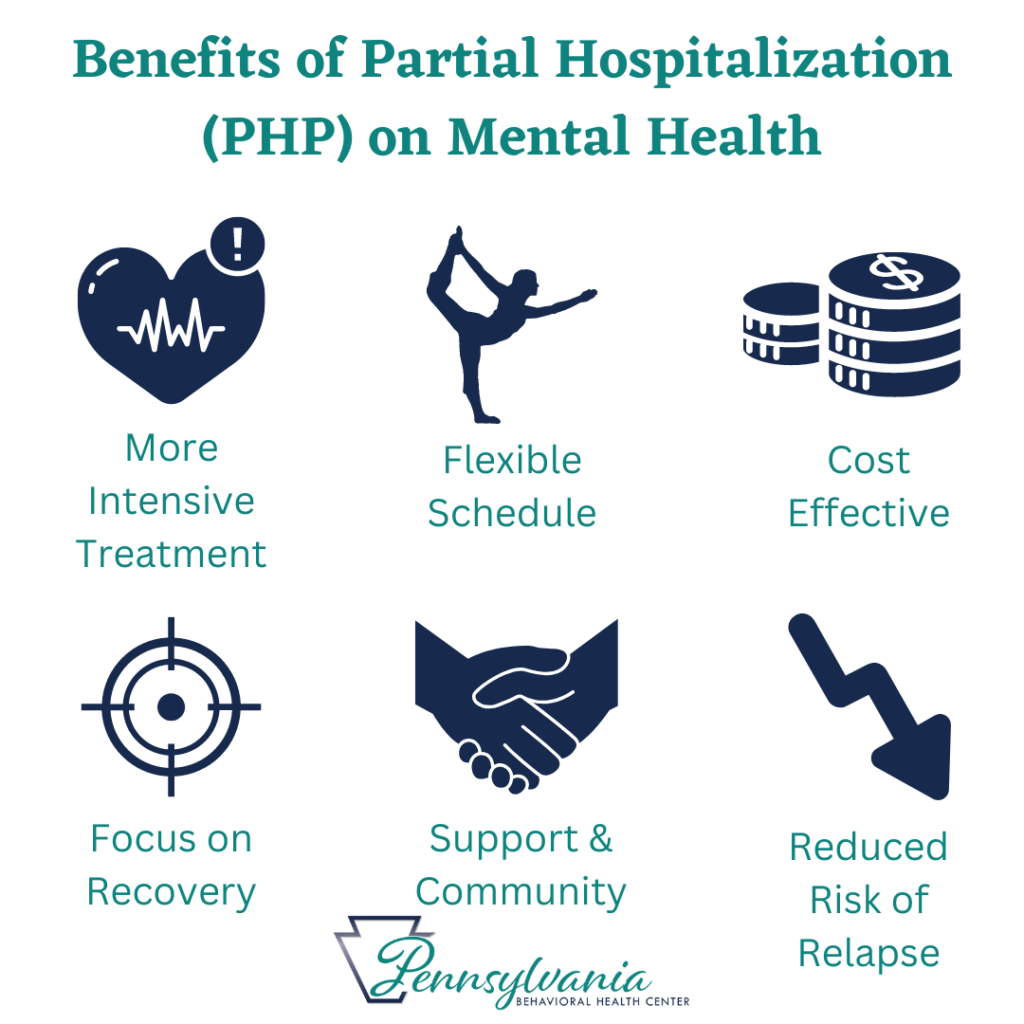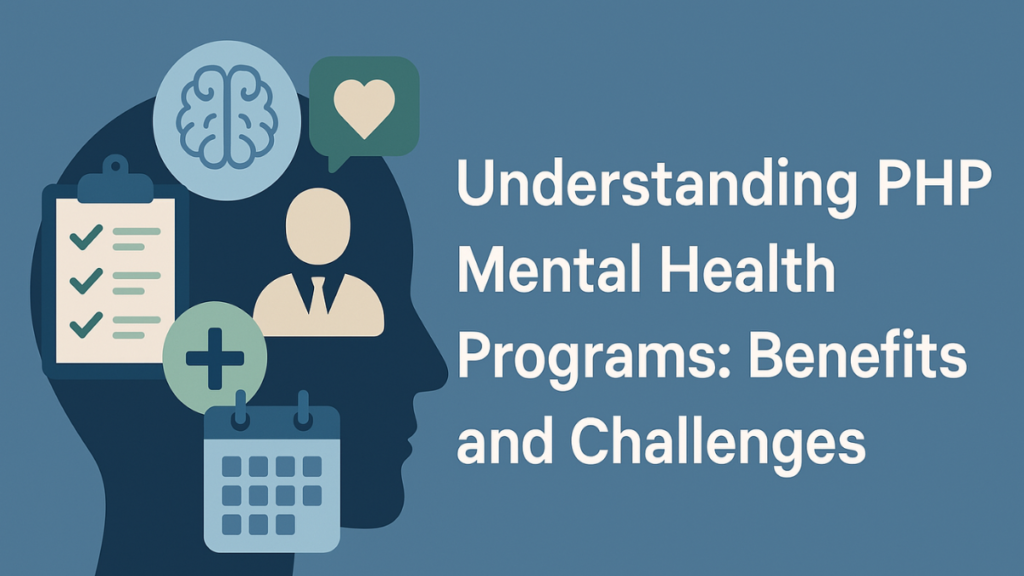Explore PHP mental health programs in-depth, including how they work, their key benefits, and the challenges faced by patients and providers alike.
also read: https://babessproduct.com/why-a-wellness-spa-is-key-to-improving-overall-health/
Introduction
Mental health is an essential part of overall well-being, and as awareness continues to grow, more individuals are seeking effective treatment options. One program gaining popularity is the Partial Hospitalization Program (PHP), a structured yet flexible treatment model for people struggling with mental health disorders. In this article, we provide a complete guide to understanding PHP mental health programs: benefits and challenges, highlighting how they work, who they are for, and what to expect.
What is a PHP Mental Health Program?
A Partial Hospitalization Program (PHP) is an intensive, structured mental health treatment program that serves as a step down from inpatient hospitalization or a step up from traditional outpatient therapy. Unlike full hospitalization, PHPs allow patients to return home at the end of each day, maintaining some degree of independence while receiving consistent therapeutic care.

PHPs typically run five days a week, with sessions lasting about six to eight hours per day. These programs include individual therapy, group therapy, medication management, psychoeducation, and other therapeutic activities. They are ideal for individuals who need a high level of support but do not require 24-hour supervision.
Who Can Benefit from a PHP?
Not everyone with a mental health condition needs a PHP. This level of care is best suited for people who:
- Have recently been discharged from an inpatient facility and need continued support.
- Are experiencing significant symptoms that interfere with daily functioning but can still manage some aspects of life independently.
- Require more structure than outpatient therapy but do not pose a danger to themselves or others.
Common diagnoses treated in PHPs include depression, anxiety disorders, bipolar disorder, PTSD, eating disorders, and substance use disorders.
Structure and Components of a PHP
PHPs are designed to offer a range of services to address different aspects of mental health recovery. Here’s a look at some common components:
1. Individual Therapy
Patients meet one-on-one with licensed therapists to explore their thoughts, emotions, and behavior patterns. Therapy may use modalities such as Cognitive Behavioral Therapy (CBT), Dialectical Behavior Therapy (DBT), or trauma-informed approaches.
2. Group Therapy
Group sessions provide a safe environment for participants to share experiences, learn from others, and develop coping strategies. Group therapy can foster a sense of community and reduce feelings of isolation.
3. Medication Management
Psychiatrists or nurse practitioners monitor and manage medications as part of the treatment plan. Regular evaluations help ensure medications are effective and adjusted as needed.
4. Psychoeducation
Educational sessions inform patients about mental health, symptom management, stress reduction techniques, and healthy lifestyle choices. These lessons equip individuals with tools to maintain their progress outside of treatment.
5. Life Skills Training
Some PHPs include workshops on communication, relationship building, job readiness, or financial management to support long-term recovery.
Benefits of PHP Mental Health Programs
Understanding PHP mental health programs: benefits and challenges is essential to determine if this care level is appropriate. Here are some key advantages:

1. Structured Support Without Full Hospitalization
PHPs provide a structured therapeutic environment without requiring patients to stay overnight. This model helps individuals apply coping strategies in real life while still receiving intensive care.
2. Smooth Transition Between Levels of Care
PHPs act as a bridge between inpatient and outpatient care. This continuity can prevent relapse and support long-term healing.
3. Individualized Treatment Plans
Each patient receives a customized care plan based on their diagnosis, symptoms, and personal goals. This ensures treatment is relevant and effective.
4. Peer Support and Social Interaction
Group therapy and communal activities reduce isolation, allowing individuals to relate to others going through similar struggles.
5. Cost-Effective Compared to Inpatient Treatment
PHPs are generally less expensive than full hospitalization while still offering comprehensive services.
Challenges in PHP Mental Health Programs
While PHPs are highly effective for many, they are not without limitations. Understanding the challenges helps manage expectations and plan accordingly.
1. Limited Availability
In some regions, PHPs may be scarce or have long waiting lists. This can delay treatment during critical periods.
2. Transportation and Scheduling Conflicts
Daily attendance requires reliable transportation and time commitment, which may not be feasible for all patients—especially those with jobs or caregiving duties.
3. Varying Program Quality
The quality of care can differ widely between facilities. It’s important to research programs and check for accreditation or reviews before enrolling.
4. Not Suitable for Severe Cases
Individuals in crisis or those requiring constant supervision may need inpatient care rather than a PHP.
5. Insurance Limitations
Insurance coverage can be inconsistent. Some providers may limit the number of sessions or types of therapies covered under PHP care.
Table: PHP vs Inpatient vs Outpatient Care
| Feature | Inpatient Hospitalization | Partial Hospitalization (PHP) | Outpatient Therapy |
|---|---|---|---|
| Duration | 24/7 care | 6–8 hours/day, 5 days/week | 1–2 hours/week |
| Supervision | Constant | Daytime only | Minimal |
| Cost | Highest | Moderate | Lowest |
| Living at Home | No | Yes | Yes |
| Best for | Acute crisis | Moderate to severe symptoms | Mild to moderate symptoms |
How to Choose the Right PHP Program
Selecting a PHP involves considering your mental health needs, lifestyle, and available resources. Look for programs that:

- Are licensed and accredited.
- Employ qualified mental health professionals.
- Offer evidence-based therapies.
- Provide a comprehensive intake assessment.
- Involve families or caregivers when appropriate.
Before beginning, speak with a mental health provider or primary care physician to determine if PHP is the right level of care for you.
FAQs about PHP Mental Health Programs
1. How long does a typical PHP program last?
Most programs last between two to eight weeks, depending on individual progress and clinical need.
2. Can I work while attending a PHP?
Some people manage part-time work, but the daily schedule often makes full-time employment difficult.
3. Are meals provided in PHP programs?
Some programs provide lunch or snacks, but it varies. Always confirm with the facility.
4. Can family members be involved in the treatment?
Yes, many PHPs include family therapy or education sessions.
5. What is the admission process like?
Admission usually involves a comprehensive assessment by a mental health professional to determine eligibility.
6. Is PHP only for adults?
No, there are PHPs specifically designed for children and adolescents as well.
7. What happens if I miss a session?
Consistent attendance is crucial, but occasional absences may be excused with notice.
8. Are PHPs confidential?
Yes, patient privacy is protected by law, similar to other healthcare settings.
9. Can PHPs treat co-occurring substance use disorders?
Yes, many PHPs are equipped to treat dual diagnoses with integrated care approaches.
10. How do I know when I’m ready to step down from PHP?
Your treatment team will evaluate your progress and readiness for less intensive care, such as IOP or outpatient therapy.
Conclusion
Understanding PHP mental health programs: benefits and challenges helps individuals and families make informed decisions about treatment. PHPs offer a balanced approach to care, blending structured support with the flexibility to remain at home. With components like individual and group therapy, medication management, and life skills training, they play a crucial role in mental health recovery.
However, PHPs are not without challenges, such as limited availability, scheduling conflicts, and insurance issues. It’s vital to consult with a healthcare provider and choose a reputable program that fits your needs. As mental health becomes a greater priority in society, options like PHPs offer hope and healing for many navigating their journey toward wellness.
also read: https://babessproduct.com/why-regular-visits-to-a-womens-clinic-matter/
also read: https://babessproduct.com/how-family-doctors-use-your-familys-health-history-in-your-care/

